
views
Preparing Emotionally
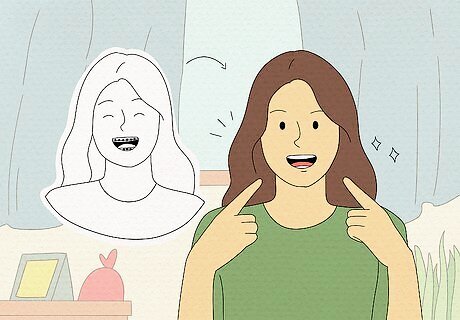
Focus on the benefits of getting braces. This holds especially true if the thought of getting braces makes you feel afraid, nervous, or reluctant. Braces will help to straighten your teeth and improve your smile. No matter what, this will raise your confidence. Also remember that lots of people have or have had braces—you’re not alone.

Choose the type of braces you will get. Although metal wire braces are probably the most traditional and widespread type of braces, there are other options. Sometimes you can choose which type of braces to get. Clear teeth aligners are an alternative. These are made of a transparent plastic material that are made to fit your specific teeth. A sequence of different sets are applied to gradually shift your teeth into position. Aligners can be easily removed so that you can eat and drink normally and no one will even notice you are wearing them. Lingual braces, which fit on the inside surface of your teeth, are another option. However, keep in mind that these braces are more expensive since they are made of gold. Each of these types of braces has advantages and disadvantages, and not every type is right for every person. Talk to your orthodontist if you have questions about the different types.

Choose the color of your braces. If you are getting metal wire braces, you may get to choose the color of their brackets and/or rubber bands. This can be fun, and a way to personalize your braces. For instance, you could: Choose your favorite color See if you can use more than one color Choose a seasonal color(s) (like black and orange for Halloween!) Choose the color(s) of a school or sports team
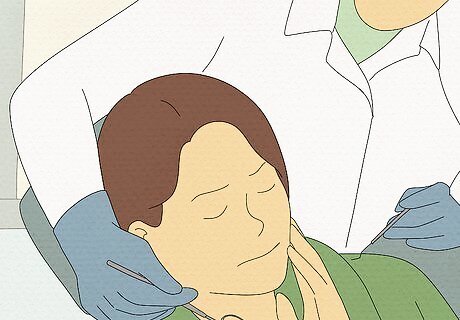
Brace yourself for slight discomfort. The process of getting metal braces is fairly quick. The orthodontist will glue small brackets to your teeth, and then insert wires to connect the brackets. You might feel a little pressure on your teeth as these parts are put on, and your mouth might feel a little sore for a few days, but this should go away quickly. Talk to your orthodontist if you have questions about how it will feel. You can also ask people who have already had braces about their experiences. This may provide some answers to your questions and it may also help you to feel motivated about getting braces because you can see other people’s end results.

Eat hard, crunchy, or chewy foods, if you want. In the first few days after your braces are put on, you will want to eat only soft foods. During the time that you have to wear braces, you will have to avoid hard, crunchy, chewy, and sugary foods and drinks. Enjoy some of these before getting your braces, if you want, since it might be a while before you can have them again.
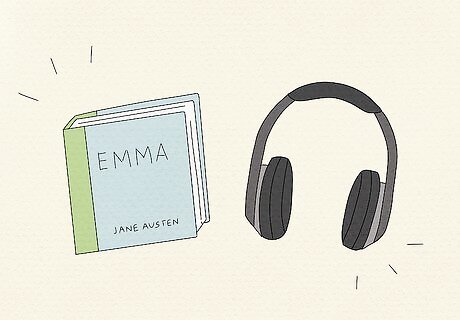
Bring a book, music, or some other distraction to the orthodontist’s office. You might have to wait a while at the orthodontist's office. Having something to keep you interested and busy while you wait will put your mind at ease, and help to pass the time.
Getting the Supplies You’ll Need

Stock up on soft foods. Because of the pressure on your teeth and the adjustment time needed, you will want to stick to soft foods for the first few days after getting braces. . Try things like smoothies, mashed potatoes, ice cream, yogurt, etc.
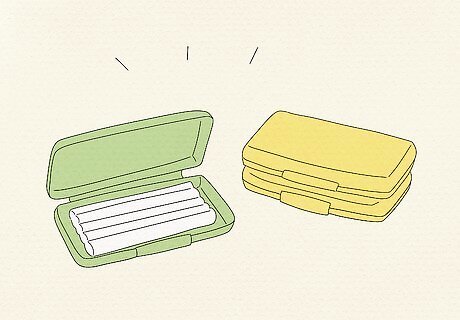
Make sure you have a supply of wax. The wax designed for braces can coat the wires so that they don’t irritate your mouth. You can ask your orthodontist for some, but you might also want to get extra for the first few days and afterwards. This wax is sold under various product names, like "orthodontic wax" "braces wax," "wax for braces," or "dental wax." It is widely available at pharmacies. It’s always a good idea to have a supply of wax with you. That way, if one of the wires accidentally breaks, you can coat it with wax to keep it from poking you until your orthodontist can fix it. Braces can also cause soreness from rubbing on the inside surface of your cheeks or lips in the first days of wearing them, so covering them with wax may be helpful.

Have pain reliever ready. An over-the-counter pain reliever can ease any discomfort your braces cause in the first few days. Make sure you have a supply before the braces are put on, just in case you need it.
Gathering Knowledge
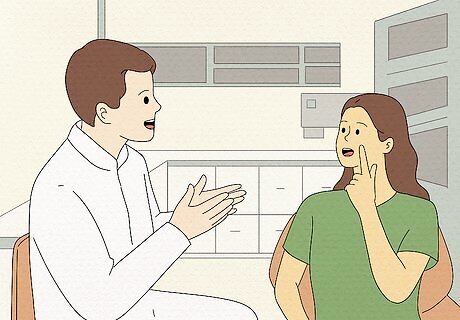
Ask your orthodontist any questions you have about getting braces. You will have to see a dentist for assessment before ever getting braces, so ask ahead of time if you have questions about what is involved. If you still have questions on the day the braces are put in, or haven’t had a chance to ask them, talk with your orthodontist before starting the procedure. If you have any questions at any step of the way while your braces are being put in, ask.
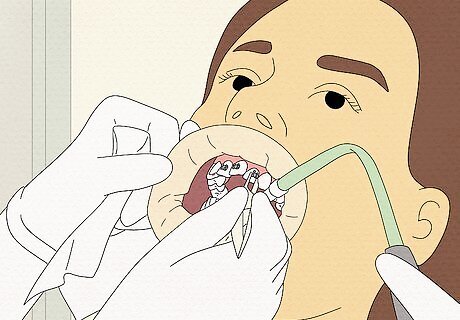
Know exactly how the braces will be applied. Having a sense of what is going to happen as the braces are put on can ease your mind. Traditional wire braces are applied in several steps: First, bands will be placed on your back molars. At this point, you might start to feel some pressure on your teeth. Next, a bracket made of metal or ceramic will be attached to each of your teeth. These brackets will be used to support the wires of the braces. Glue will be used to adhere the brackets to your teeth—it might not taste good, but it is harmless. You might get to choose the color of these brackets. After that, the orthodontist will place wires in the tops and bottoms of the brackets. These wires help to gradually move your teeth into position during the time that you wear the braces. The wires will be cut so that they don’t poke the inside of your mouth. Next, small rubber bands will be inserted to keep the wires in the brackets. You might get to choose the color of these bands. If you are getting clear teeth aligners, these will be fitted to your particular teeth, and can be removed to eat. They look similar to the custom made whitening trays used for the home whitening treatment. You’ll have to get a new set of aligners every two weeks.

Understand how to get through the first few days with braces. At first, you will be very conscious of the fact that you are wearing braces. As time goes on, you will get more used to it. Still, you should know that in the first few days: You might feel a dull pain because of the pressure on your teeth. This pain is caused by the metal wire pulling on the brackets. You can take an over-the-counter pain reliever to ease this. This discomfort will go away. You will have to remember to eat only soft foods at first.

Make yourself comfortable. Since your braces might make your mouth sore at first, you will probably want to take it easy for a while. Aside from taking pain relievers to avoid soreness, you might want to avoid talking too much and other activities that might cause discomfort. If you play a wind instrument (brass or reed), you will still be able to with braces. However, there will probably be an adjustment period needed to get used to the feeling of playing your instrument with braces. You also might want to avoid playing your instrument for the first few days after your braces are put in.

Prepare for life with braces. Living with braces can mean some long-term adjustments. Knowing about this ahead of time will make the whole process easier. You will have to avoid hard, chewy, crunchy, and tough foods, as well as sugary foods and drinks while you have braces. Ask your orthodontist about specific recommendations regarding what is ok to eat, and what is not. You might be asked to wear headgear. Headgear is a rigid wire that hooks onto the bands of your braces and around your head. It helps to either move your teeth into position, or keep them there. Usually, you are only asked to wear headgear at night, if at all. Your braces will have to be adjusted periodically, according to a schedule your orthodontist develops. Your teeth will move gradually into position, and your orthodontist will have to adjust the braces as they do. Most people wear braces between one and three years. After your braces come off, your orthodontist might ask you to wear a retainer for a while. This is a rigid piece of material that fits behind your teeth.
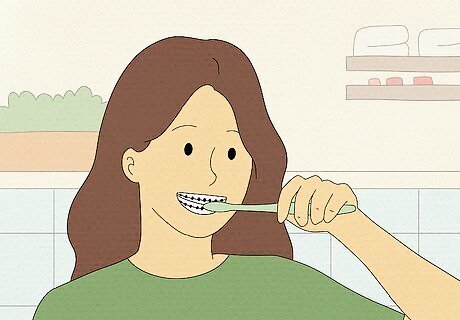
Take good care of your braces. Just as you would normally need to take care of your teeth, you will have to regularly brush and rinse your teeth and braces. Ask your orthodontist for any special tips for keeping your braces and teeth clean. Food particles can get caught in your braces. Be extra sure to brush well around all the parts of the braces (especially after meals) to avoid plaque buildup and tooth decay. You will need to spend extra time brushing every bracket going from the back of your mouth to the front. Make sure you brush every tooth thoroughly and use dental tools to get between your teeth, such as an interdental brush, floss, and an oral irrigator. Rinsing with mouthwash will also help to keep your teeth and braces clean. Your dentist might also ask you to use a fluoride rinse for extra protection. You will need to floss using a special flexible plastic “threader” that can get around the parts of the braces. These are widely available at pharmacies.




















Comments
0 comment